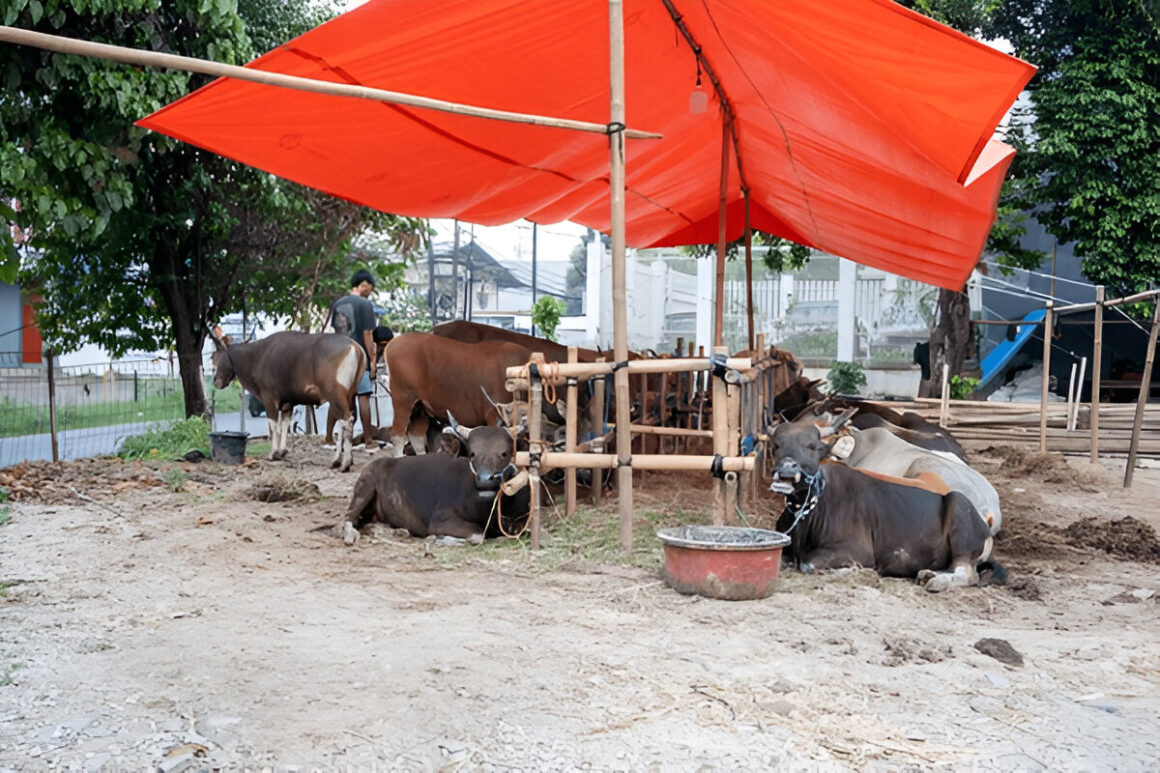In the chaos of cattle markets and the quiet prayers of farmers, Pakistan’s economy quietly roars to life every Eid-ul-Azha. Beyond its spiritual significance, the Eid-ul-Azha Economic Impact fuels a staggering PKR 839.2 billion surge—roughly 1% of the national GDP—according to the Pakistan Institute of Development Economics. But numbers alone don’t tell the story. For millions, this is survival. For industries, it’s a lifeline. And for Pakistan, it’s proof that tradition and modernity can coexist in an economic miracle.
The Eid-ul-Azha Economic Impact
Let’s start with the obvious: the livestock boom. In the weeks leading up to Eid, over 10 million animals—goats, cows, camels—change hands in markets that resemble Wall Street on steroids. Prices fluctuate wildly; a prime bull in Lahore’s Shahpur Kanjran market recently sold for PKR 1.2 million. But dig deeper, and the Eid-ul-Azha economic impact reveals a complex web of interdependence:
- Agriculture: Fodder sales spike by 300% as urban buyers stockpile feed.
- Transport: Truckers like Muhammad Ali from Quetta report tripling their income hauling livestock.
- Retail: From ornamental dyes for goats to razor-sharp knives, entire supply chains awaken.
“This isn’t just business—it’s our safarish system at work,” explains Dr. Ayesha Khan, an agricultural economist. “The Eid-ul-Azha economic impact redistributes wealth in ways no government program ever could.”
Rural Pakistan’s Golden Ticket
Here’s where the Eid-ul-Azha economic impact cuts deepest: Dawn estimates PKR 200-300 billion flows from cities to villages during this period. In Tharparkar, a drought-stricken region where malnutrition plagues children, Eid earnings fund 60% of annual household expenses.
Take the case of Gulzar, a shepherd in rural Sindh. Last year, his family survived on borrowed wheat. This Eid, his two healthy goats fetched PKR 150,000. “Now I can fix my roof before monsoon,” he says, eyes glistening. For once, the system works for him.
But there’s a catch. Middlemen often exploit illiterate farmers. A 2023 study by the Pakistan Poverty Alleviation Fund found sellers receive 35% less than fair prices in informal markets. “We need regulated auction platforms,” argues Karachi-based economist Farrukh Saleem. “The Eid-ul-Azha economic impact could double if we formalize this chaos.”
Eid-ul-Azha Fuels Leather Industry
While meat dominates headlines, the Eid economic impact gives Pakistan’s leather sector—the world’s 10th-largest exporter—its annual adrenaline shot. Post-Eid, tanneries process 8-10 million hides, generating $200 million in exports.
But infrastructure failures threaten this windfall. Last year, prolonged load-shedding in Kasur caused PKR 4.2 billion in hide spoilage. “We need 72 hours of uninterrupted power,” says tannery owner Asif Mahmood. “Otherwise, this ‘gold’ turns to garbage.”
When Festive Zeal Meets Systemic Weaknesses
The Eid-ul-Azha economic impact isn’t all rosy:
- Price Gouging: Urban buyers paid PKR 450/kg for mutton this year—up 40% from 2022.
- Waste Management: Municipalities struggle with 500,000+ tons of offal, risking disease outbreaks.
- Energy Shortfalls: Tanneries need urgent upgrades to solar/biogas systems to avoid losses.
“We’re sitting on a bioeconomic goldmine,” says environmental scientist Dr. Hina Aslam. “If we convert waste to biogas, Eid could power 50,000 homes annually.”
More Than a Festival—A Blueprint?
The Eid-ul-Azha economic impact holds a mirror to Pakistan’s potential. Here’s an organic system that uplifts the poorest, fuels exports, and bypasses bureaucratic red tape. But to sustain this momentum, we need:
- Digital livestock exchanges to ensure fair pricing
- Green energy solutions for tanneries
- Public-private partnerships in waste recycling
So this Eid, as we mark the occasion with prayer, family, and food, let’s not forget the silent army of workers—the farmers, traders, butchers, and artisans—who make this celebration possible and meaningful for everyone.


Leave a Reply